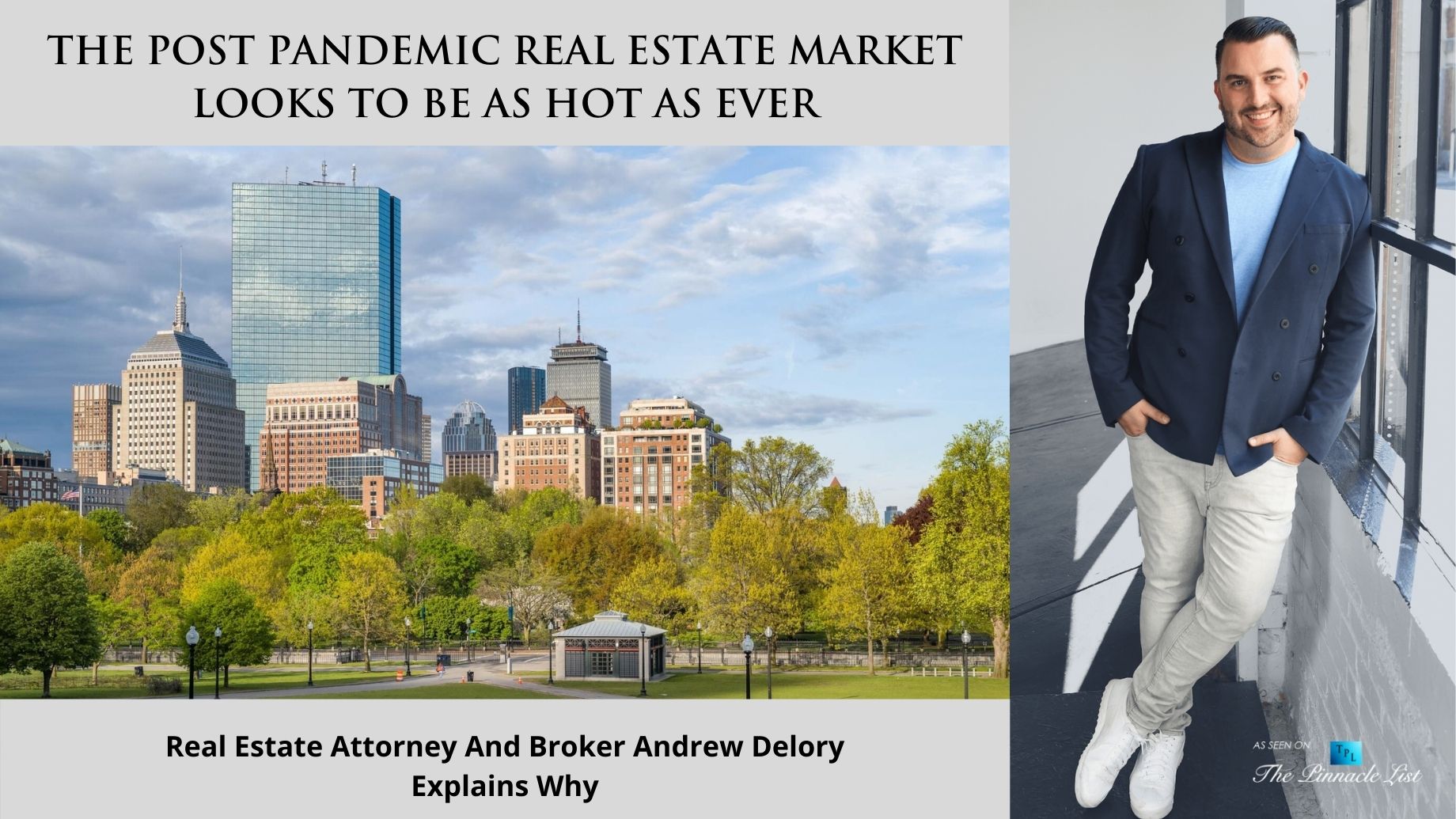
Real estate is an ever-evolving landscape. We sat down with Andrew Delory, Massachusetts-based real estate attorney at Delory Law and owner of his own real estate brokerage, Tutto Properties, LLC, to get a professional’s take on how the market has changed and what he predicts some of the lasting effects of the pandemic will be.
What do you see happening with the market? Will it stay as hot as it is now?
Historically, sellers who had become empty nesters would “downsize” but it’s not happening. Space and amenities remain at a premium. People have fallen in love with home again because of the pandemic. One thing I expect is that millennials are going to be a big part of the home-buying demographic. They are ready now more than ever to get into a home. The pandemic may have postponed things, but they are ready, and in better financial shape than ever to get into this competitive market. Millennials remain the largest population group on earth, all reaching first-time homebuyers age at the same time. According to the Federal Reserve, Americans gained $13.5 trillion dollars in wealth during the pandemic. Government-mandated student loan forbearance, coupled with reduced commuting and general life expenses left millennials stacking their cash during the pandemic. This cash got redirected to eliminating credit card debt. A couple of well-timed full-sends into a $GME or $AMC didn’t hurt wallets either.
What about the overwhelming demand for homes? Is that going to change?
The month’s-supply of housing inventory (how long it would take to sell every house on the market with no new listings coming on the market) is 2.4. This is the lowest recorded measurement recorded by the Federal Census since at least 1999. Roughly 4 million new construction homes are needed to meet the shortfall. Then you factor in the lumber shortage, lumber and stock prices are through the roof right now. The National Association of Home Builders cost of lumber has increased by 300% since April 2020. With everyone stuck at home during the pandemic, this huge influx of unpredicted home projects overwhelmed the existing supply. Coupled with COVID-driven plant closures at timber mills, the restocking shortages have caused a massive influx of price. Add in the Suez Canal blockage disrupting the world supply chain and you boom! have the historic rises in lumber prices. So, supply and demand in the market are not going to even out any time soon.
What do interest rates have to do with it?
The Federal Reserve did a two-step dance during COVID to bolster the economy from collapse. First, they allowed banks to borrow money from the federal reserve at a 0% interest rate. This meant that banks could borrow money for literally zero and offer it out to consumers for cheap.
Act Two, was to purchase mortgage-back securities at a record rate. When consumers get mortgages from traditional banks they are typically backed by Fannie Mae, Freddie Mac, which are mortgage servicing and insurance arms of the government. This meant that a bank could lend their cheaply borrowed money to a consumer, make their profit and the government would buy the mortgage and be on the hook if the consumer eventually defaulted. These lower interest rates gave borrowers a ton of more borrowing power also, and an extra $40,000 of purchasing power on average for the same price. Even as interest rates begin to gradually rise, rates remain well below their pre-pandemic levels.
Andrew Delory has a passion for helping people understand and come out on top of the real estate market. He has spent over a decade in the industry and knows every part of the process inside and out. Learn more about what he does on his website and social media.